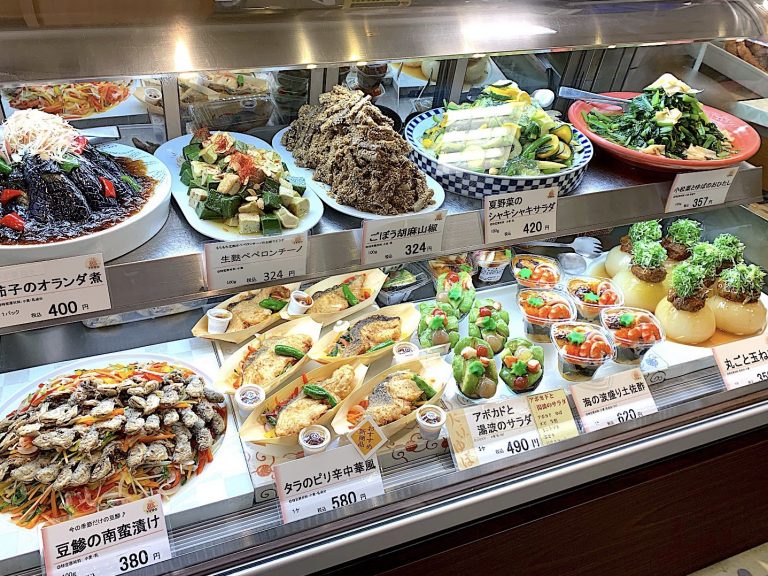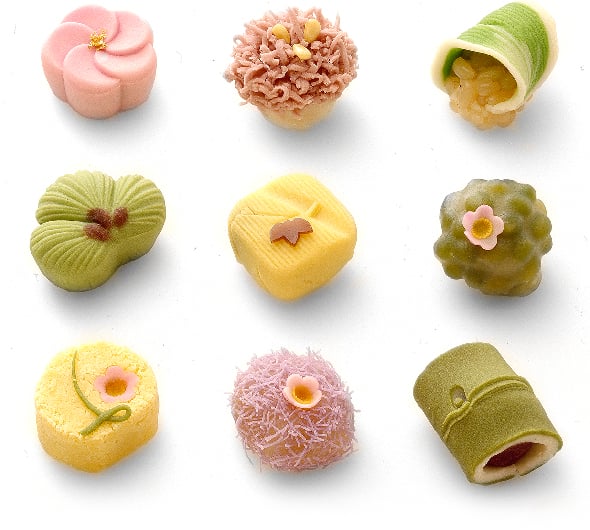
When visitors to Japan are looking for something to eat, it is easy to overlook the department stores. The image of department stores as being full of overpriced clothing and pretentious restaurants serving mediocre food is changing, these days, there are plenty of foodies who make a beeline for them to try local specialties at reasonable price.
The best place to find great local dishes is usually in the basement of the department stores. Known as depachika, which is made out of the words department (デパート- depaato) and basement (地下- chika), these areas should be on every gourmet’s must-visit list.
Food as a gift
One of the interesting uses of the depachika is for business people to buy gifts for the important people in their life (usually customers and coworkers in Japan). The gifts are often food-related products, such as the packs of cookies or cakes that are shared as souvenirs with the rest of the office after a business trip and the infamously overpriced melons and other fruit that Japanese businessmen often send to their favorite customers.
Buyer beware, what you see is what you get with these gifts, as a single melon may cost literally hundreds of dollars. Unless you are doing a lot of business in Japan or have a big event coming up, you will likely not have to worry about this section. Instead, most visitors will want to head for the food and packed lunches section.
Buying Depachika Food
Most depachika divide their food into three sections: a fresh vegetables and fruit section, a sweets and confectionary section, and a food/packed lunch section. Of course, depending on location, you may find a lot of other things down in the basement from wine-tasting booths to ethnic dishes.
Thankfully, the fruit and vegetable section is usually reasonable compared to the crazy prices of the fruits in the gifts section. Simply choose the fruits and vegetables that you want and put them in the bags provided. Generally, the price is for one piece and it is rarely weighed, so go for the biggest, juiciest one!
On the other hand, the confectionary is often sold by the box with the exception of Japanese treats (called 和菓子) and things like small cakes or parfaits. At many stores it is impossible to buy a single chocolate, so instead ask for the different sizes, as it may be possible to buy a small pack of three chocolates for a reasonable price.

和菓子
Although the sweet things are great, most people immediately head for the food/packed lunch section. In this area, each place has a specialty food and everything from Chinese to traditional Japanese food is available.
However, be careful, as unlike the confectionary section, these dishes are often sold by the 100 grams. Because it is really difficult to understand exactly how much 100 grams actually is, you will often see plastic containers that a previously weighed out and priced that you can use for reference.
The Wari System
A lot of the food at depachika is fresh, so at the end of the day it has to be sold otherwise it is disposed of. During this time, the depachika suddenly becomes alive with activity as students and business people coming home from work look for a bargain.
Savvy shoppers should look for the yellow ~割 tickets. A 割 (pronounced ‘wari’) is a ten-percent discount; therefore, 2割, for example, is a 20-percent discount. This word wari is also found in the word for a discount (割引), so you can also use it to ask for some money off towards the end of the day.
Finding the Depato
So, we’ve convinced you to go to the depachika and eat some local specialties. Now, the next problem is finding one. Luckily, most department stores are intentionally close to the big stations with some even having exits that connect to the entrances to major lines. This is so that people can quickly buy things and get on their train home.
So if you want to buy something simply ask the staff near the exits to the train stations for the nearest デパート(depaato). Of course, each town varies, but the major depaato to enquire about are: Isetan, Mitsukoshi, Takashimaya, Keio, Matsuya, and Odakyu. Most towns will have at least one of these. Another tip is to go to the private train lines and look around there. Kintetsu train lines, for example, often have Kinsetsu Department stores nearby for example.
So the next time you are hungry, why not try out the depachika. It can be a great way to try local foods at a reasonable price, especially if you can find one of those 割 stickers.

















